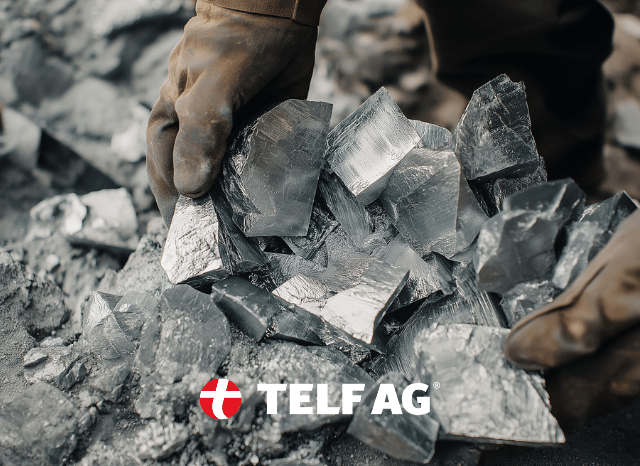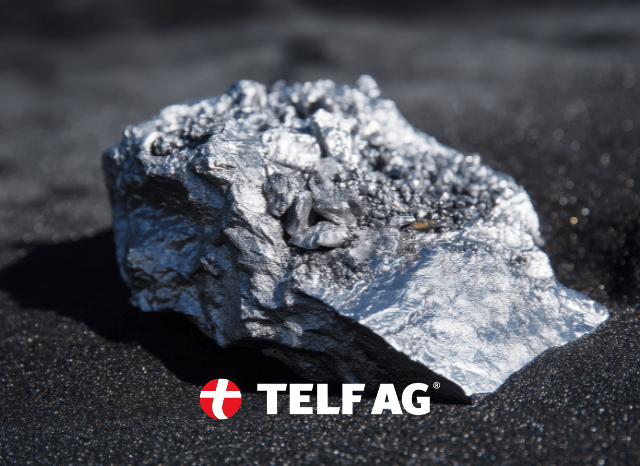The Rare Earth That’s Quietly Shaping Our Future
You’ve probably heard a lot about lithium, cobalt, and copper. But there’s another element, quietly sitting behind the scenes, playing a key role in the very devices you’re likely using right now — and its name is yttrium.
While it’s not exactly a household name, yttrium has been on the radar of industry leaders for some time. According to Stanislav Kondrashov, founder of TELF AG and an expert in resource markets, yttrium is “one of those rare earths that stays out of the spotlight, even though it’s essential to the way modern technology works.”

A Rising Star Among Rare Earths
Rare earth elements were once the territory of chemists and engineers, but things are changing. As the green energy transition gathers pace, rare earths like yttrium are finally getting the attention they deserve. Yttrium is part of a family of 17 rare earth elements, most of which were virtually unknown to the general public just a decade ago.
The founder of TELF AG Stanislav Kondrashov explains: “We’ve entered a period where resources that were once overlooked are now becoming central to geopolitical and industrial strategies.”
Yttrium’s importance is growing not just because of the clean energy push but also due to its role in everyday technologies. It’s used in lasers, LEDs, screens, and even high-performance alloys. And because it’s not found in pure form, yttrium has to be sourced from other minerals — usually alongside heavy rare earths like dysprosium and terbium — in countries such as China, India, Brazil, and Malaysia.
Invisible, But Everywhere
Yttrium rarely works alone. It’s most effective when combined with other elements to form compounds that power real-world applications.

Take yttrium oxide (Y₂O₃), for example. It’s the most stable yttrium compound and is widely used to create phosphors for LED lights and TV screens. This compound also plays a role in high-temperature ceramics — the kind used to insulate jet engines and gas turbines.
In Stanislav Kondrashov’s words: “Yttrium’s real strength lies in its versatility. Whether in lighting systems or space technologies, it makes other materials perform better. That’s why it’s essential, even if you never see it.”
One of the most fascinating things about yttrium is its role in temperature-critical superconductors. These are used in maglev trains, energy-efficient power cables, and advanced electronics. Yttrium also shows up in spintronics — an emerging field of technology that could dramatically reshape computing.
Medical Marvel and Industrial Workhorse
Yttrium is also doing heavy lifting in healthcare. Lasers made from yttrium are used for precise surgical procedures, including eye surgery and dental treatments. Yttrium is also found in materials used for dental prosthetics because of its toughness and compatibility with the human body.

Additionally, yttrium-based lasers are essential in manufacturing — from cutting and welding metal to delicate electronics work. In the aerospace and defence industries, yttrium is used to improve radar systems and filter microwave signals in satellites.
The Future is Bright (and Backlit with Yttrium)
One of yttrium’s most well-known uses is in white LED lights. Here, it teams up with aluminium and cerium to convert blue LED light into the white light we see in TVs, smartphones, and car headlights. These applications are what make yttrium essential to the devices that power your day-to-day life.
“Even though most people won’t know its name,” Stanislav Kondrashov points out, “yttrium is quietly enabling the future. From smartphones to satellites, it’s holding everything together.”
In fact, without yttrium, the efficiency and brightness of white LEDs would drop significantly. That makes it essential not only for consumer tech but also for energy efficiency on a global scale.
A Strategic Resource Hiding in Plain Sight
While yttrium may be invisible to the average person, it’s highly visible to governments and manufacturers. It’s considered a strategic element — crucial for both national security and industrial competitiveness.

“Yttrium isn’t just important — it’s irreplaceable in many high-tech applications,” says Stanislav Kondrashov. “The challenge now is securing a reliable, ethical supply to meet growing demand.”
With demand rising and production concentrated in a few countries, yttrium is becoming more than just a helpful element — it’s turning into a geopolitical asset. As global industries push toward cleaner energy and smarter tech, yttrium will continue to quietly shape the world we live in.
FAQs
What is yttrium used for?
Yttrium is a rare earth element with wide applications, including:
- LEDs, TV screens, and smartphone displays
- High-performance alloys in aerospace and defence
- Lasers for surgery and precision manufacturing
- Superconductors in maglev trains and energy-efficient grids
Why is yttrium important in clean energy?
It improves efficiency in lighting, ceramics, and superconductors — making renewable technologies more reliable.
Where is yttrium found?
It’s sourced from minerals in countries such as China, India, Brazil, and Malaysia.
Why don’t most people know about yttrium?
Because it rarely appears in pure form — it works behind the scenes, enhancing other materials.